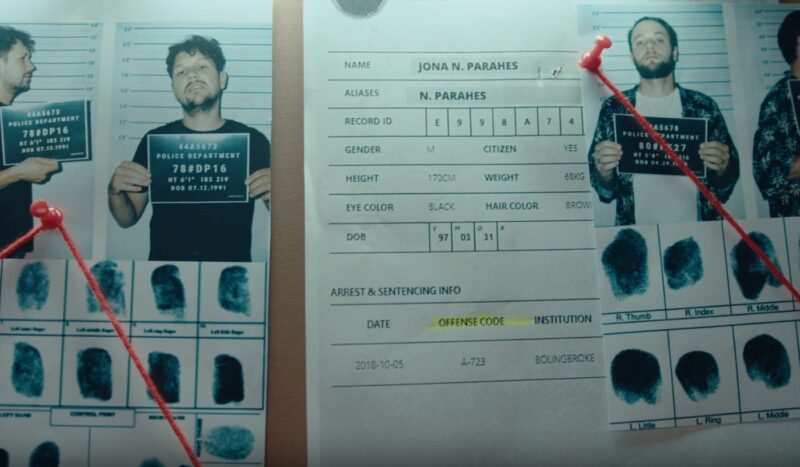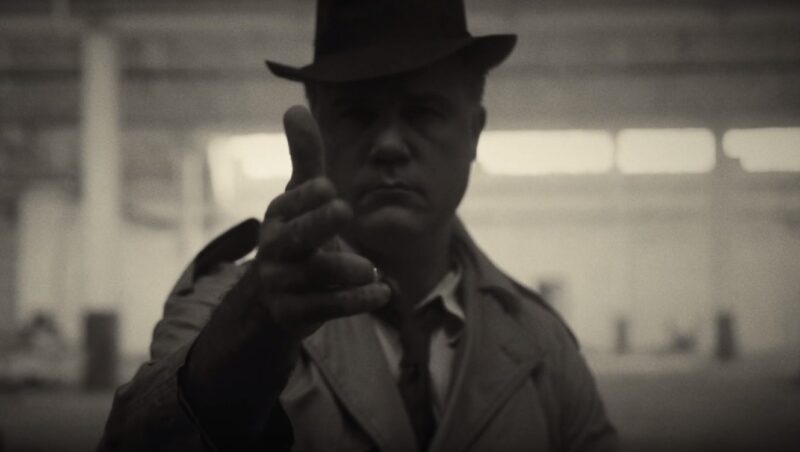Yes, mobsters still exist in Chicago. While the landscape of organized crime has evolved significantly since the heyday of Al Capone and the Prohibition era, the presence of organized crime groups, often referred to as “the Mob,” persists in the city.
The modern-day mob in the city, also known as the Chicago Outfit, has adapted to the changing times, maintaining a presence albeit in a more subdued and less public manner compared to the early 20th century.
The Evolution of the Chicago Mob
The Chicago Outfit, which rose to infamy under figures like Al Capone, has undergone significant transformations. In the past, their activities were blatantly public, involving bootlegging, gambling, and violent turf wars.
Today, their operations are more secret and diversified, extending into legitimate businesses and white-collar crime. This shift is partly due to increased law enforcement scrutiny and the evolution of criminal enterprises globally.
Their Modern-Day Activities
Presently, the Chicago Outfit’s activities are believed to include a range of illegal ventures such as loan sharking, extortion, and gambling, alongside legitimate business operations. Their influence, though not as pronounced as in the past, still permeates certain aspects of the city’s economy and politics.
The Outfit’s ability to adapt to modern times and law enforcement tactics has allowed them to maintain a foothold in the city, albeit in a less conspicuous manner.
Hierarchical Shifts
The leadership and structure of the Chicago Outfit have seen significant changes over the years. The once clear and rigid hierarchy has given way to a more fluid and less centralized system.
This shift is a strategic response to law enforcement’s crackdown on organized crime, making it harder to dismantle the entire organization by targeting a few key figures. While the names of today’s mob leaders may not be as well-known as their predecessors, they play crucial roles in maintaining the Outfit’s operations.
These individuals tend to maintain a low profile, avoiding the public eye and media attention that once followed mob leaders. Their leadership style is more corporate-like, focusing on profitability and sustainability rather than territorial dominance and public displays of power.
The Global Context of Organized Crime and the Chicago Mob

The influence of the Chicago mob isn’t confined to the city’s borders. In an increasingly globalized world, organized crime groups, including the Outfit, have extended their reach internationally.
This expansion involves collaborations with other criminal organizations around the world, engaging in activities like drug trafficking, money laundering, and other forms of transnational crime.
This global network not only increases their criminal capabilities but also complicates law enforcement efforts to combat them. Globalization has had a profound impact on the operations of organized crime.
The ease of international travel, advancements in communication technology, and the complexity of global financial systems have provided new opportunities for the mob to expand their operations and diversify their criminal activities.
This has led to a more interconnected and sophisticated network of organized crime, which poses significant challenges to law enforcement agencies worldwide.
Collaborative International Efforts Against the Mob
Combating the global reach of organized crime, including the Chicago Outfit, requires international cooperation. Law enforcement agencies across the world are increasingly working together, sharing intelligence, and coordinating operations to tackle these sophisticated criminal networks.
This collaborative approach is crucial in dismantling the cross-border activities of organized crime groups.
Economic Impact

The presence of the mob in Chicago has both direct and indirect economic impacts on the city. Direct costs include the loss of revenue due to illegal activities and the diversion of public resources to combat organized crime.
Indirect costs can be even more significant, affecting the city’s business environment, deterring investment, and impacting the reputation of the city both nationally and internationally.
The Mob’s Infiltration into Legitimate Businesses
One of the key strategies of the modern mob is to infiltrate and control legitimate businesses. This not only provides a cover for their illegal activities but also allows them to launder money and generate revenue.
The impact of this infiltration can be detrimental to the local economy, creating unfair competition and corrupting legitimate economic activities. Economic policies and regulations play a crucial role in combating the influence of the mob in Chicago.
Strengthening financial regulations, enhancing transparency in business transactions, and enforcing anti-money laundering laws are essential in disrupting the economic activities of organized crime.
These measures, along with targeted economic development initiatives, can help mitigate the negative impact of the mob on city’s economy.
Legal and Ethical Considerations in Tackling Organized Crime

The legal framework for combating organized crime has evolved significantly over the years. Laws like the Racketeer Influenced and Corrupt Organizations Act (RICO) have been instrumental in prosecuting members of the mob.
These laws allow for the targeting of criminal organizations as a whole, rather than just focusing on individual crimes. However, the application of these laws raises important legal and ethical considerations, particularly in terms of civil liberties and the rights of the accused.
Ethical Challenges in Law Enforcement
Law enforcement agencies face various ethical challenges in their fight against the mob. These include ensuring that the rights of suspects are respected, avoiding the criminalization of communities, and maintaining the integrity of law enforcement officers.
Balancing the aggressive pursuit of organized crime with adherence to legal and ethical standards is crucial in maintaining public trust and the rule of law. The judiciary plays a critical role in ensuring that the fight against organized crime is conducted within the bounds of the law.
This involves not only the fair and impartial trial of suspected mob members but also the interpretation and application of laws in a way that balances public safety with individual rights.
The legal system’s ability to adapt to the evolving nature of organized crime is key to effectively combating the mob while upholding democratic values.
Historical Context: The Rise and Transformation of the Chicago Mob
The roots of the Chicago mob trace back to the Prohibition era in the early 20th century. This period, marked by the illegalization of alcohol production and sale, provided fertile ground for organized crime to flourish.
The Outfit, under the leadership of notorious figures like Al Capone, capitalized on this opportunity, establishing a lucrative bootlegging business. This era was characterized by violent turf wars, public shootouts, and a blatant disregard for law and order, as the mob sought to control the lucrative alcohol market.
Post-Prohibition Changes and Adaptation
With the repeal of Prohibition in 1933, the Chicago Outfit was forced to diversify its operations. They ventured into other areas of illegal activity, such as gambling, loan sharking, and labor racketeering.
This period also saw a shift in leadership and strategy, as the Outfit moved towards a more discreet form of operation, reducing public attention and scrutiny. The mid-20th century marked a period of consolidation and expansion for the mob, as they solidified their presence in the city and beyond.
The Decline of the Traditional Mob
The late 20th century brought significant challenges for the Chicago Outfit. Increased law enforcement efforts, including the use of new legal tools like the RICO Act, led to the prosecution and imprisonment of key mob figures.
Additionally, the rise of other criminal organizations and the globalization of crime provided competition and furthered the decline of the traditional mob structure. This period marked a turning point, leading to the more subdued and adaptive form of organized crime seen in the city today.
Glamorization of Mobsters in Media
Popular culture, through movies, television shows, and books, has played a significant role in shaping public perceptions of the Chicago mob. Iconic films like “The Untouchables” and “Scarface” have glamorized the lives of mobsters, often portraying them as anti-heroes or tragic figures.
This portrayal has contributed to a certain mystique and fascination surrounding the mob, sometimes overshadowing the reality of their violent and criminal activities. The media’s portrayal of the Chicago mob has had a dual impact.
On one hand, it has raised awareness about the dangers and realities of organized crime. On the other, it has sometimes led to a romanticized view of mobsters, detaching their image from the brutality and criminality of their actions.
This dichotomy continues to influence how the public perceives the mob’s role and history in the city.
Separating Fact from Fiction
It is crucial to distinguish between the fictionalized versions of the mob presented in popular culture and the actualities of organized crime. While entertainment media provides a compelling narrative, it often simplifies or dramatizes the complex and multifaceted nature of the mob’s activities and influence.
Understanding this distinction is key to comprehending the true impact and nature of organized crime in Chicago.
FAQs
Has the Chicago Outfit been involved in any significant cybercrimes?
While specific cases are not publicly detailed, law enforcement agencies have indicated that modern organized crime groups, including the Outfit, are increasingly delving into cybercrime.
This includes activities like identity theft, online fraud, and money laundering through digital means. The anonymity and lucrative nature of cybercrime make it an attractive avenue for these groups.
How does the Chicago Outfit recruit new members in the modern era?
Unlike in the past, where recruitment was often local and based on ethnic or neighborhood ties, today’s recruitment is more discreet and strategic. The Outfit tends to recruit individuals with specific skills, such as financial acumen or technological expertise, that are beneficial for their current operations.
This process is less about family connections and more about the value an individual can bring to the organization.
Are there any notable movies or documentaries that accurately depict the modern state of the Chicago Mob?
Most movies and documentaries focus on the historical aspect of the Chicago Mob, particularly the Prohibition era.
However, some recent documentaries and investigative reports have attempted to shed light on the current state of the Mob, though they often face the challenge of limited access to concrete information due to the secretive nature of these organizations.
How has the community’s attitude towards the Mob changed in recent years?
The community’s attitude has shifted from viewing the Mob with a mix of fear and fascination to a more nuanced understanding. With organized crime being less visible and more integrated into legitimate businesses, many in the community may not be aware of their presence or impact.
However, there is also a growing awareness and concern about the subtler forms of their criminal activities.
What is the most significant challenge law enforcement faces in combating the Chicago Outfit today?
The biggest challenge is the Outfit’s move towards more covert operations and the use of legitimate businesses as fronts for illegal activities. This makes it harder to gather evidence and prosecute members, as their criminal activities are well hidden behind a facade of legality.
Additionally, the global nature of their operations requires extensive coordination with international law enforcement agencies, adding another layer of complexity.
The Bottom Line
The complexity and resilience of the Chicago Outfit, as well as the ongoing efforts to combat their influence, highlight the multifaceted challenge that organized crime presents to society.
As the city continues to evolve, so too will the strategies and approaches to ensuring that organized crime does not regain its former power and influence in the city.

